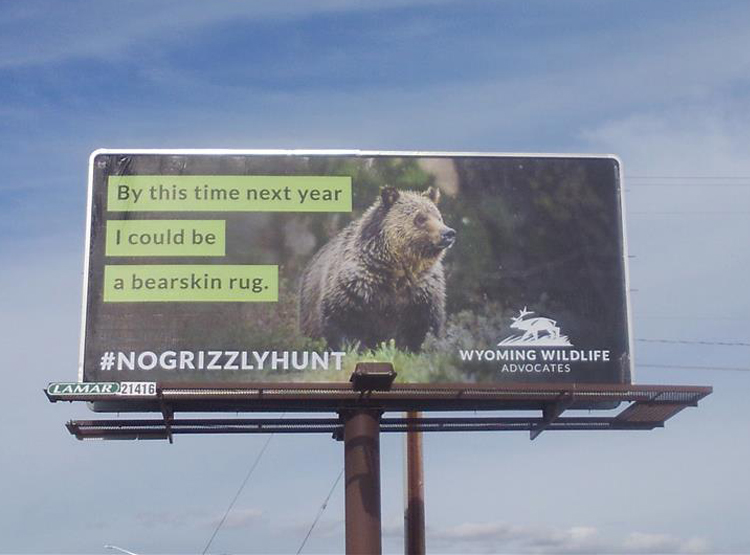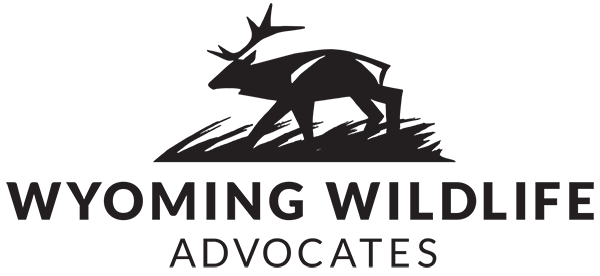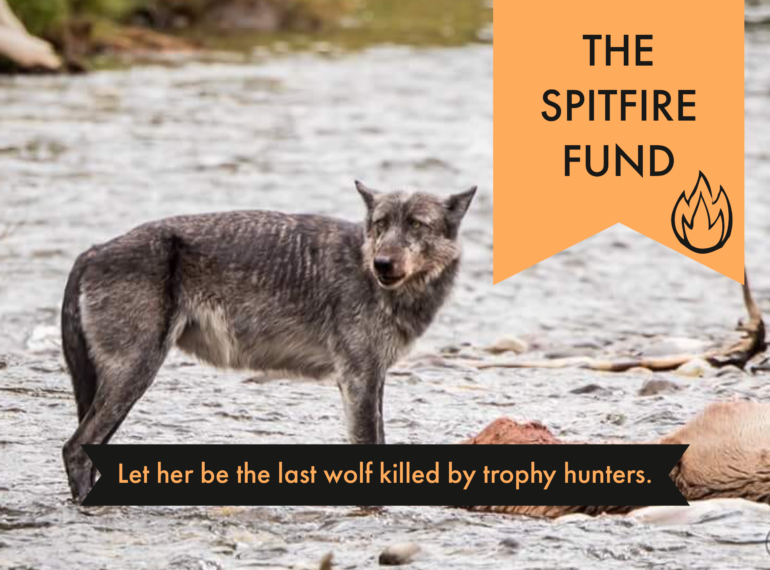An overwhelmingly positive response to The Spitfire Fund has marked its first hours of existence. In addition to a generous outpouring of heartfelt contributions and enthusiasm, we’ve received some excellent questions about the next steps.
Her name evokes a sense of resilience and strength, of bold and unwavering fidelity to what is right.
Wyoming Wildlife Advocates has spent the past two months developing our wolf campaign. Originally, we planned to kick off this new effort in January of 2019. However, the discovery of Chronic Wasting Disease in Teton County and the disturbing trophy killing of Spitfire outside of Yellowstone inspired us to reconsider the timeline. It became clear that strong, clear voices for the wolves of the GYE were needed immediately.
We decided that Spitfire could become the symbol for what we want to achieve, and also how we want to achieve it. Her name evokes a sense of resilience and strength, of bold and unwavering fidelity to what is right. And so our campaign has taken on her essence; let her be the last wolf to fall to trophy hunters in the GYE.
WWA’s mission is to inform, educate and empower communities on management issues, and that’s the roadmap for The Spitfire Fund, too.
Inform, Educate, Empower
WWA will begin the campaign with a series of educational blogs on the benefits of wolves, working to deconstruct the negative mythology that surrounds them. Moreover, we will be working to systematically expose the cruel and backwards thinking of predator management in the region. We will share this information widely via our social media platforms, so be sure to follow us on Facebook and Instagram for the latest.
We also plan to develop informational ads that will appear in regional newspapers, likewise aimed at expanding the understanding of wolves’ value on the landscape and to our regional economies.
In past years, WWA has placed billboards resisting trophy hunting in communities that are gateways to Yellowstone National Park. We plan to expand that outreach, and help visitors understand that the wildlife they see within the park can be killed as soon as they set one foot over the invisible boundary line. These billboards are reaching the millions of people flooding into Yellowstone and Grand Teton National Parks and educating them about the poor management of our wildlife in Wyoming, Idaho, and Montana. Most visitors do not realize the daily assault that our predators encounter from state wildlife management agencies and ranchers. This wildlife belongs to everyone in the country, and they should be more aware of how their wildlife is treated.

Activate the Community, Build Collaborative Relationships
There are millions of people across the West and the country that are furious that our wildlife is selfishly being killed for no reason. We are aiming to connect these groups together and serve as a clearinghouse for information and action.
Mark your calendars for Saturday, January 12th and join us for a community protest of trophy hunting. Location and time details are currently being finalized. It’s an opportunity to connect with others in the community who oppose trophy hunting, and to visibly show the world that we will no longer accept trophy hunting as management of predators in the GYE.
Additionally, WWA will be posting action alerts any time there are ways in which community members (from Wyoming or elsewhere) can help further the cause.
It’s 2018: our communities, wildlife, and ecosystems deserve better.
On the Horizon
WWA is in discussions with other regional groups and experts to arrange for exciting events around the area. Our goal is simple – help everyone understand that wolves are worth infinitely more alive than dead.
This effort will not be a sprint, but a marathon. Our collective vision of an ecosystem in which predators are left to play their critical roles is not one we can achieve alone; we must collaborate and prepare for a long journey. We are on the right side of history here – trophy hunting is unethical and is not supported by the vast majority of people. Moreover, it hardly represents innovative or even modern wildlife management. It’s 2018: our communities, wildlife, and ecosystems deserve better.
Click here to contribute to The Spitfire Fund now.

Photos of Spitfire by Jason Pazo.

